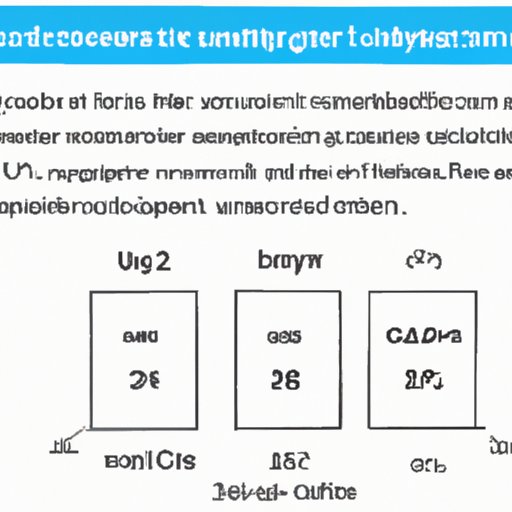
Introduction
Have you ever needed to calculate the volume of a particular space in cubic yards but didn’t know where to start? Whether you’re trying to determine how much soil is needed for your garden or how much concrete to order for a construction project, understanding how to calculate cubic yards is an essential skill to have. In this article, we will break down the steps involved in calculating cubic yards, provide examples to illustrate the process, highlight some common mistakes to avoid, and provide tips and tricks to make the process easier.
Step-by-Step Guide
Calculating cubic yards involves a simple formula: length x width x height, or depth, which is represented as follows:
Cubic Yards = Length x Width x Height/Depth
Let’s say we want to calculate the cubic yards of a space that measures 10 feet long, 5 feet wide, and 3 feet deep. Using the formula above, we can calculate the cubic yards as follows:
Cubic Yards = 10 feet x 5 feet x 3 feet = 150 cubic feet
Since we want to express the volume in cubic yards, we need to divide the cubic feet result by 27 (the number of cubic feet in a cubic yard).
Cubic Yards = 150 cubic feet ÷ 27 = 5.56 cubic yards
Therefore, the cubic yards of the space is 5.56.
It may seem complicated because of the different units of measurement involved, but once you understand the formula, it becomes a simple process.
Visual Aids
Sometimes, it’s easier to understand the calculation process visually. Below is a diagram that shows how to calculate cubic yards using the same dimensions as the example above:

Using this chart, we can see that the space measures 10 feet long, by 5 feet wide, by 3 feet deep, and has a volume of 150 cubic feet. When we divide this volume by 27, we get the cubic yards of the space, which is 5.56.
Real-World Examples
Now that we’ve covered the basics, let’s look at some real-life examples of when we might need to calculate cubic yards.
– Ordering materials: If you’re working on a landscaping project and need to order soil, mulch, or gravel, you’ll need to know the cubic yardage of the space you’re hoping to cover. The same applies when ordering concrete, which is generally sold by volume in cubic yards.
– Filling a container: If you have a container with irregular dimensions you’re trying to fill, understanding the volume of the container in cubic yards can help ensure you order the right amount of materials.
– Building a pool: The volume of a pool can be calculated in cubic yards, which helps builders know how much concrete is required to form the foundation.
Understanding how to calculate cubic yards is important in many industries, including construction, landscaping, and waste management.
Comparison with Other Measurements
It’s important to use the correct measurement units when calculating volume. While cubic yards are commonly used in the United States, other countries and industries may use different units of measurement like cubic feet or cubic meters.
When converting between units of measurement, it’s important to keep the proportions correct. For example, 1 cubic meter equals 1.31 cubic yards, while 1 cubic foot equals 0.037 cubic yards.
In conclusion, using the correct units of measurement is essential to getting accurate volume measurements.
Common Mistakes to Avoid
One of the most common mistakes to avoid when calculating cubic yards is not converting the units of measurement correctly. Ensure that all units, including the length, width, and depth, are measured in the same unit before calculating.
Another mistake is forgetting to use the correct formula for shapes other than rectangles. For example, if measuring a circular container, the formula would be π x radius squared x depth.
Tips and Tricks
Here are some tips for making the calculation of cubic yards easier and more accurate:
– Use an online cubic yard calculator for complex calculations, or if you’re not comfortable with the math involved.
– Break down complex shapes into simpler ones to make the calculation simpler and more accurate.
– Remember that the formula represents the measure of volume, and not area.
Applications in Different Industries
As we’ve mentioned earlier in the article, understanding cubic yards is essential in many industries, including construction, landscaping, and waste management. This knowledge can help in ordering materials, determining the volume of containers, and planning the construction of buildings and swimming pools.
Conclusion
In conclusion, calculating cubic yards is an essential skill that applies to many industries. Whether you’re filling a container or building a pool, understanding the process involved can help avoid costly mistakes and ensure accuracy in measurements. Remember to use the correct units of measurement, and keep in mind the formula for calculating cubic yards is simple once you understand it.




